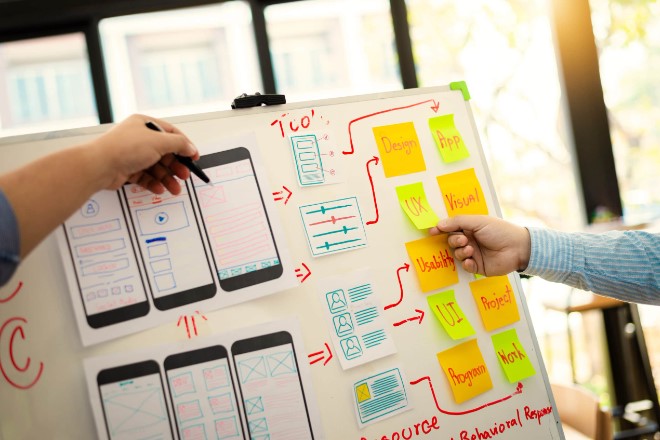The winners of Fast Company’s Innovation By Product Design award in 2019 have a few commonalities. They are not only sleek and intuitive but also have a sustainability focus.
For instance, a carbon-negative, algae-based plastic raincoat and a reusable takeaway-cup service for large venues were among the winning designs. These designs meld form and function to create an excellent user experience for the customer and the planet.

However, designing a great product takes time, and entrepreneurs can explore various product development strategies to achieve a breakthrough design.
The process could begin with something as simple as a napkin scrawl and then progress to finding the right partner to take the design to the next level.
Traditional Business Approach
The traditional business approach considers the viability and operational/technical feasibility of a product when designing it. After identifying a problem or set of problems, it derives a profitable solution.

However, this approach often doesn’t lead to success because it doesn’t focus on why a customer needs the product, but rather on how and what. This company-centric approach’s metrics don’t consider the end user’s needs, which is why design thinking has become more popular.
Design Thinking Approach
Design thinking, popularized by IDEO founder Tim Brown, is a human-centered approach to innovation that considers the needs of people, the possibilities of technology, and the requirements for business success.
It incorporates the user experience into the design process and goes beyond the look and feel of product design. One of the key factors that contribute to the success of design thinking is the prototyping phase.

By testing the product design with small groups of users throughout the development process, designers can help reduce the risk of launching a new product.
A prototype validates that the design is appealing and easy to understand and use for the customers before the product goes into mass production.
Lean UX Approach
The Lean Start-up and Lean UX approaches prioritize prototyping and take design thinking to the next level. Lean Start-up involves taking an idea, translating it into a product or service, measuring customer response, and using feedback to pivot or iterate.
Similarly, Lean UX applies this approach specifically to design, focusing on the human experience behind the design.

According to one UX blog, the core objective is to obtain feedback as early as possible to make quick decisions. However, while Lean UX is highly collaborative as if the customer is designing the product alongside the company, it can ignore other factors related to development, leading to a product design bubble.Creating a tech pack can also help the process of looking at a UX and the ability to mass produce a product.
Ultimately, the goal of Lean UX is to continuously improve the product by getting feedback quickly.
Design Sprint Approach
Design thinking is a broad approach to product design that incorporates the user experience into the design process. The Lean Start-up and Lean UX approaches build on this by putting prototyping front and center.
Design sprints, a subset of design thinking, have five distinct phases that take place over five days. While design sprints focus on a specific aspect of a problem rather than creating an entirely new product, they still integrate elements from other approaches.

The best approach for your company depends on its maturity level and available resources. If you’re looking for expert help with product development strategy, speak to the experts at Gembah, or for digital transformation support, contact Bombyx PLM.